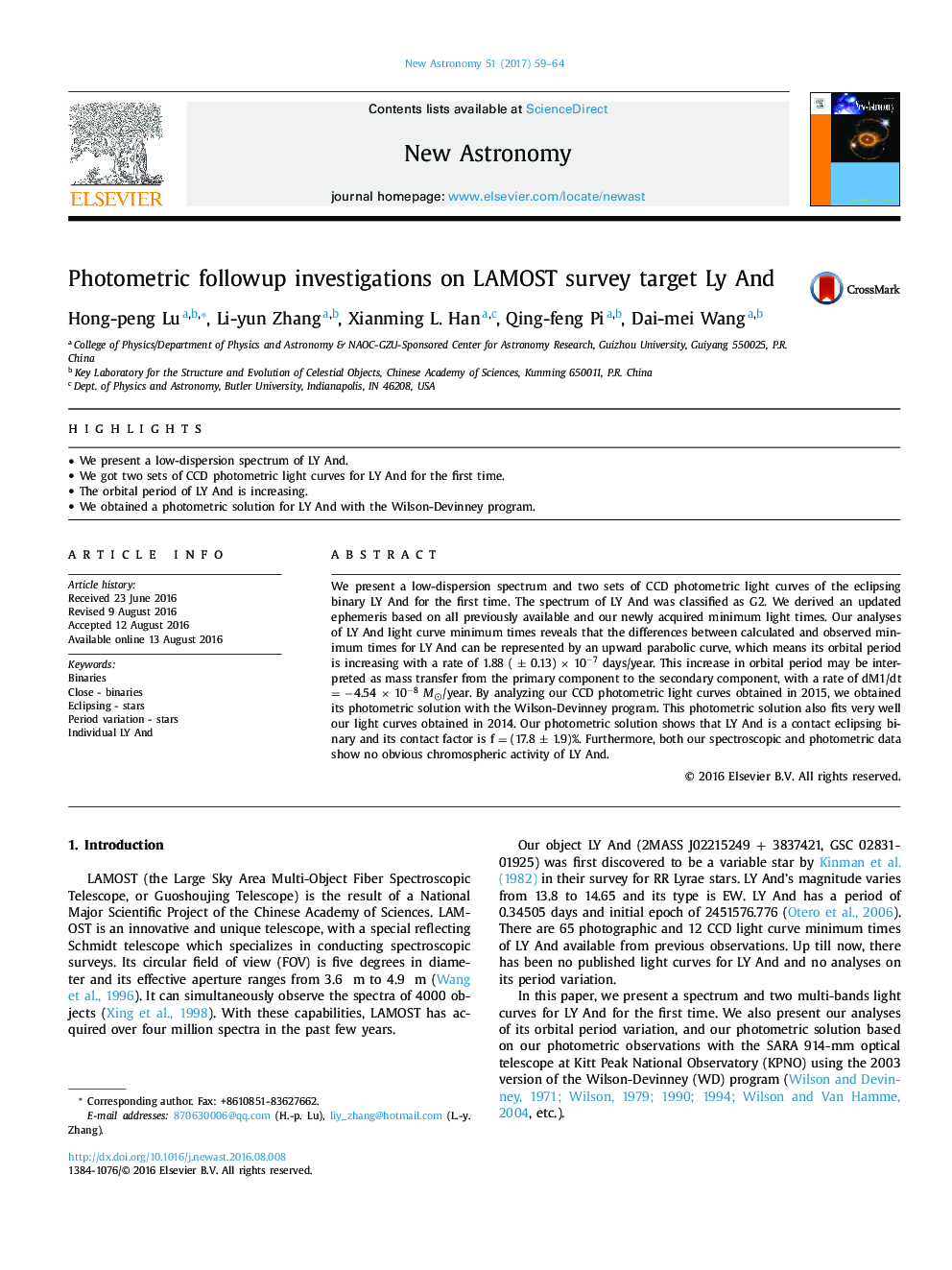| Article ID | Journal | Published Year | Pages | File Type |
|---|---|---|---|---|
| 1778674 | New Astronomy | 2017 | 6 Pages |
•We present a low-dispersion spectrum of LY And.•We got two sets of CCD photometric light curves for LY And for the first time.•The orbital period of LY And is increasing.•We obtained a photometric solution for LY And with the Wilson-Devinney program.
We present a low-dispersion spectrum and two sets of CCD photometric light curves of the eclipsing binary LY And for the first time. The spectrum of LY And was classified as G2. We derived an updated ephemeris based on all previously available and our newly acquired minimum light times. Our analyses of LY And light curve minimum times reveals that the differences between calculated and observed minimum times for LY And can be represented by an upward parabolic curve, which means its orbital period is increasing with a rate of 1.88 ( ± 0.13) × 10−710−7 days/year. This increase in orbital period may be interpreted as mass transfer from the primary component to the secondary component, with a rate of dM1/dt = −−4.54 × 10−810−8M⊙/year. By analyzing our CCD photometric light curves obtained in 2015, we obtained its photometric solution with the Wilson-Devinney program. This photometric solution also fits very well our light curves obtained in 2014. Our photometric solution shows that LY And is a contact eclipsing binary and its contact factor is f = (17.8 ± 1.9)%. Furthermore, both our spectroscopic and photometric data show no obvious chromospheric activity of LY And.
